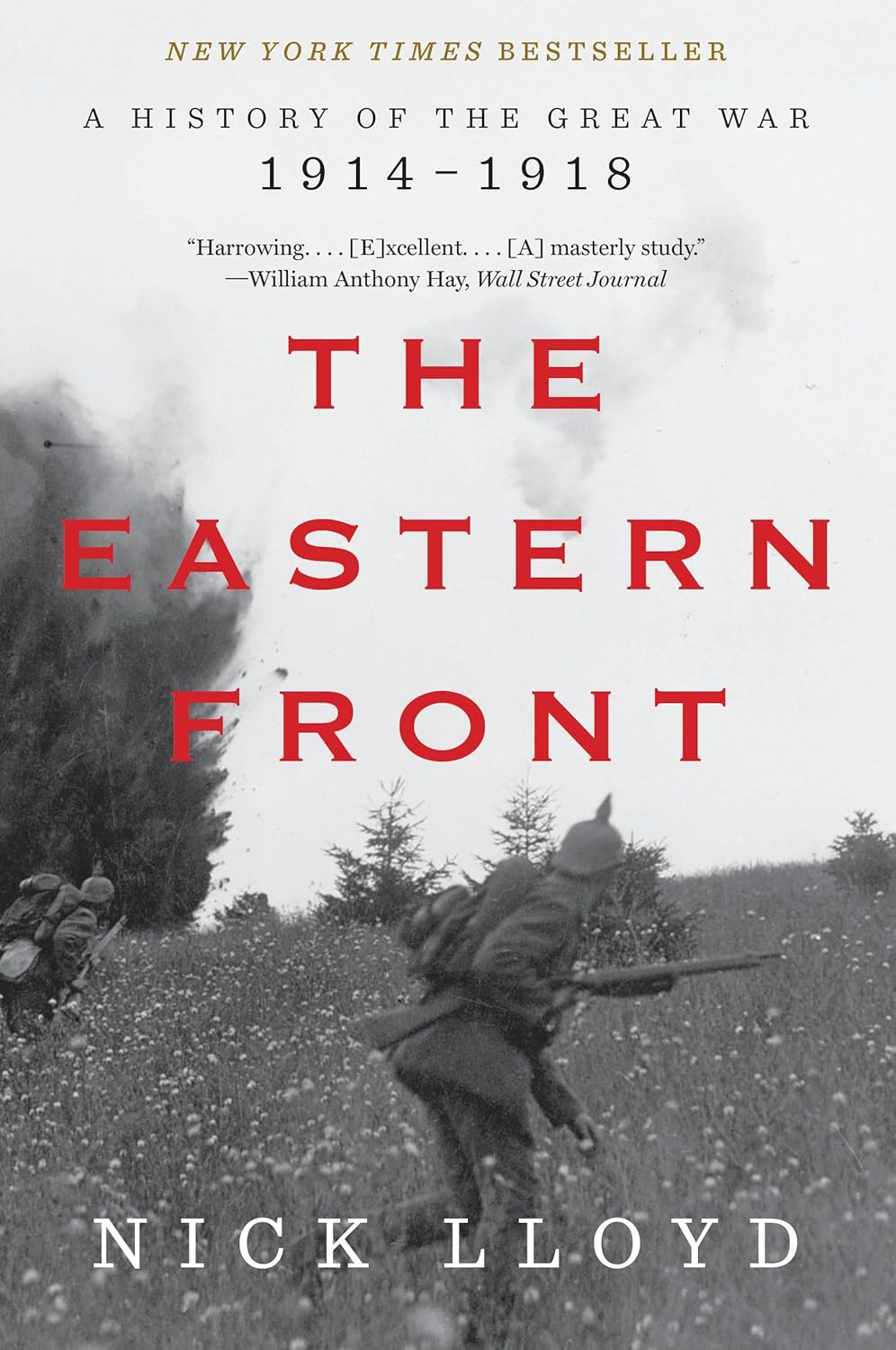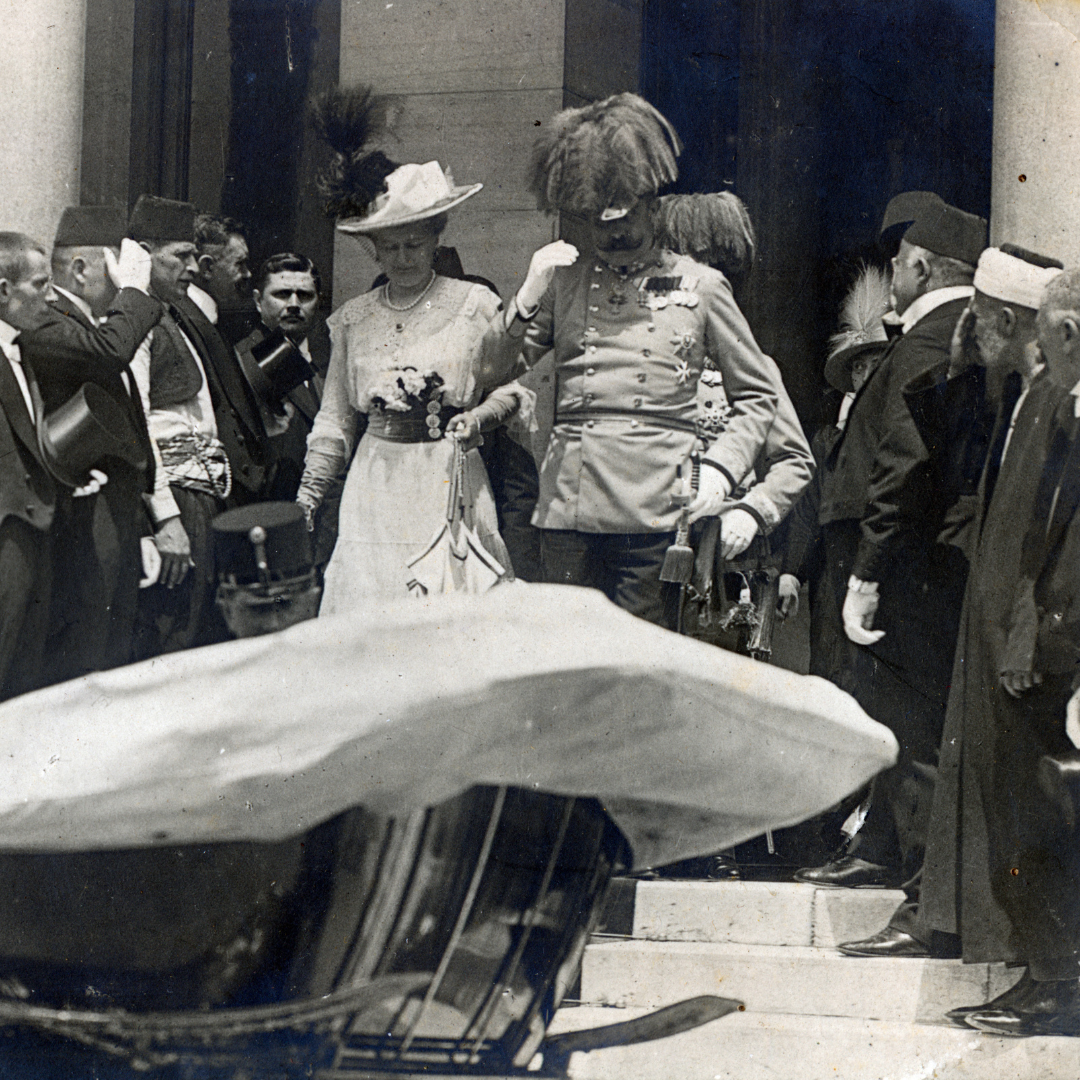A new history of the Eastern Front

Published by: W. W. Norton & Company

When it comes to the First World War, English-language readers tend to be focused on the Western Front, with some minor interest in the campaigns in Palestine and Syria, the latter often motivated by interest in either Lawrence of Arabia or the origins of the Arab-Israeli conflict. As for the Eastern Front, the massive conflict fought between Imperial Russia and the Central Powers of Germany and Austria-Hungary, which spanned the present-day Baltic states, Poland, Belarus and Ukraine, it tends to be largely ignored. At most, it is treated as a mere prelude to the Russian Revolution. In the second and latest volume of his three-volume work on the First World War, Nick Lloyd seeks to rectify this situation. The first volume, published in 2021, covered the western front. The third, yet to be published, will cover the war in Africa and the Middle East.
A Professor of Modern Warfare at King’s College, London, Lloyd offers an engaging, scholarly yet well-written chronological narrative of the military campaigns waged in the east between 1914-18. His focus is on the macro level, on what are termed the strategic and operational levels of war. Lloyd discusses the leading figures and strategic approaches of all the nations involved in the eastern half of the First World War. While focusing mostly on military battles and campaigns, he also incorporates key political events and developments that impacted the various combatants’ war efforts, most notably the Russian Revolution. A particular strength of his narrative is his effective use of primary sources, in numerous languages, to illustrate how senior soldiers and statesmen understood events at the time and why they made the choices they did. Finally, In both his extensive endnotes and lengthy bibliography, Lloyd offers an excellent starting point for further research.
Lloyd takes an expansive view of the Eastern Front, including not just the main struggle between the Russian Empire and the Austro-German alliance, but also the Balkans and even the Italian Front. This effectively allows him to show how developments in each of these areas impacted the rest of the Eastern Front and elsewhere. This approach, however, inevitably leads to a focus on the one combatant that was fully engaged in all these areas: the Austro-Hungarian Habsburg Empire.
It was, of course, Austria-Hungary that began the war by going to war with Serbia in response to the murder of Archduke Franz Ferdinand in Sarajevo. It is this event that Lloyd begins his narrative with. The Habsburg desire to seize the opportunity presented by the assassination to reverse its perceived decline was arguably the single most important factor in bringing about the war. The architect of the Austro-Hungarian war effort, General Franz Conrad von Hötzendorf, Chief of the Habsburg General Staff, was eager to confront Serbia for challenging Austria’s position in the Balkans.
All of the technology that existed in the west was also employed in Eastern Europe, Italy, and the Balkans: intricate trench lines, machine guns, rapid firing artillery, poison gas, the airplane. Yet, the war in the east was anything but the stalemate found on the Western Front
Lloyd’s analysis makes clear the vital importance of the Eastern Front both in itself, and for how it shaped the subsequent history of Central and Southern Europe. For one thing, the Eastern Front was every bit as bloody as was the war in the west. Russia suffered an estimated 2.3 million deaths, while Austria-Hungary suffered over 1 million killed. Serbia endured higher per capita losses than any other combatant in the entire war.
In addition, broadening our view of the First World War beyond the trench warfare of the Western Front offers a fuller understanding of that conflict. All of the technology that existed in the west was also employed in Eastern Europe, Italy, and the Balkans: intricate trench lines, machine guns, rapid firing artillery, poison gas, the airplane. Yet, the war in the east was anything but the stalemate found on the Western Front from 1915-17. On the main Eastern Front where the Germans and Austrians faced the Russians, gains of dozens of miles were not uncommon, while the Central Powers also scored decisive victories over smaller adversaries such as Serbia, Montenegro, and Romania. Even the Italian Front saw a major Austro-German breakthrough in fall 1917 at Caporetto. Why were such advances possible in these places, but not on the Western Front for most of the war?
The most important reason, as Lloyd points out, was not the current state of military tactics and technology per se, but rather the extremely dense force-to-space ratio found in France and Belgium. The armies in the east were just as large as those in the west. However, the frontline in the east extended for roughly twice the length as that of the Western Front. The armies in France and Belgium thus had no room to maneuver, and little ability to exploit breakthroughs until 1918. The Eastern Front, by contrast, offered much greater room for maneuver, and the frequent opportunity to turn tactical breakthroughs into sizable advances.
The war in the east was also shaped by the nature of the combatants themselves. The Austro-Hungarian army, for example, was plagued by an almost reckless commitment to the tactical offensive, along with an artillery arm that was severely limited in both numbers and quality. The result was approximately a million casualties suffered by the end of 1914, a blow from which the Habsburg army never recovered. Conrad’s generalship was another factor in Austrian military failure. Strategically, his obsession with focusing on lesser threats such as Serbia and Italy, at the expense of prioritizing the Russians, made a difficult situation even worse. In addition, Conrad repeatedly set his forces up for failure by asking them to carry out ambitious offensive plans that looked superb in theory, but that in practice were simply beyond their ability to execute.
Of course, the other armies in the East had their own problems. The Russian army, despite performing better than it is sometimes credited for, suffered greatly from Tsarist Russia’s still incomplete process of industrialization. This resulted in a serious shortage of weapons and munitions in 1915 that helped lead to the loss of pre-war Russian Poland and hundreds of thousands of casualties. Even the Germans, who constituted the best army on the Eastern Front and who usually defeated their Russian foes, were limited in what they could achieve by the need to deploy the bulk of their country’s forces on the Western Front, as well as the ever-increasing need to bolster their much weaker Habsburg allies.
In the end these limitations doomed all of the major combatants on the Eastern Front. The same weaknesses of Tsarist Russia’s administrative, economic and transportation infrastructure that hindered the war effort ultimately brought down the entire regime, leading to the Russian Revolution and subsequent Peace of Brest-Litovsk. Unfortunately for the Central Powers, their victory proved to be a pyrrhic one. Austria-Hungary was so weakened by its efforts that its army collapsed in the face of a last-minute Italian offensive in October 1918, while the Habsburg empire splintered into its various ethno-national parts. Even Germany’s eastern successes failed to save it from the consequences of internal crisis, defeat on the Western Front, and the domino-like collapse of its allies.
Lloyd’s excellent history explores all of these issues. It serves as a superb introduction to the First World War in Central and Southern Europe, one that both specialists and general readers will find of interest.
David M. Durant is Associate Professor/Federal Documents & Social Sciences Librarian at East Carolina University, in Greenville, NC. He holds a Master of Science in Library & Information Services from the School of Information, University of Michigan, and an MA in Russian and Soviet History from the University of California, Los Angeles. He has written two books: Reading in a Digital Age and Congress and Countersubversion in the 20th Century: Aspects and Legacies. He has also published articles in portal: Libraries and the Academy, Choice, Library Journal, The Chronicle of Higher Education, and Against the Grain.
